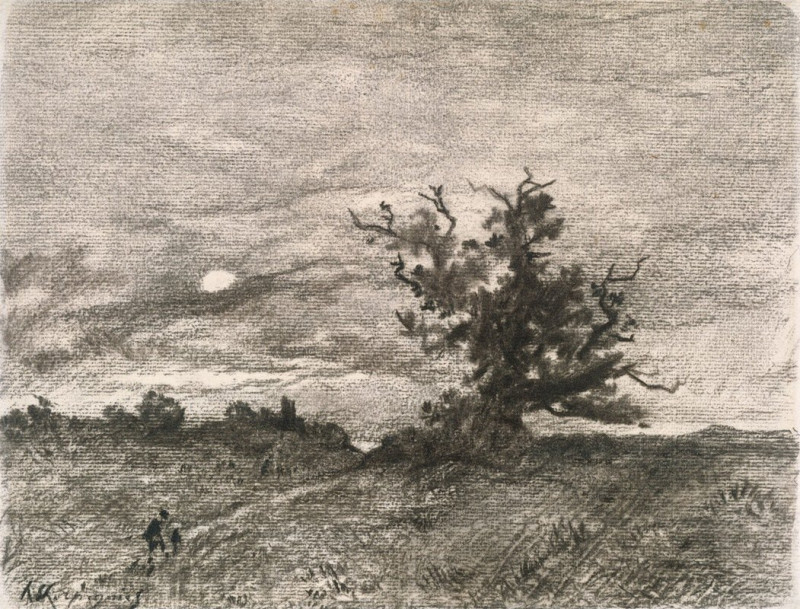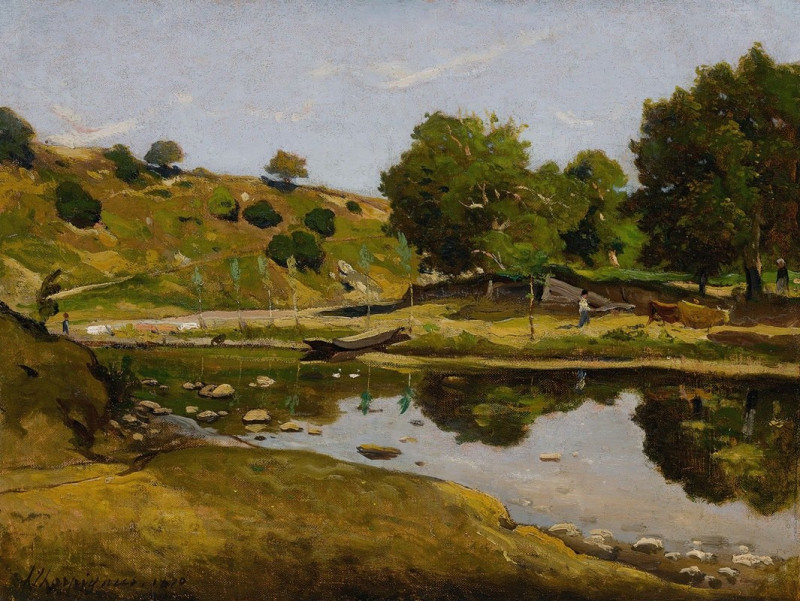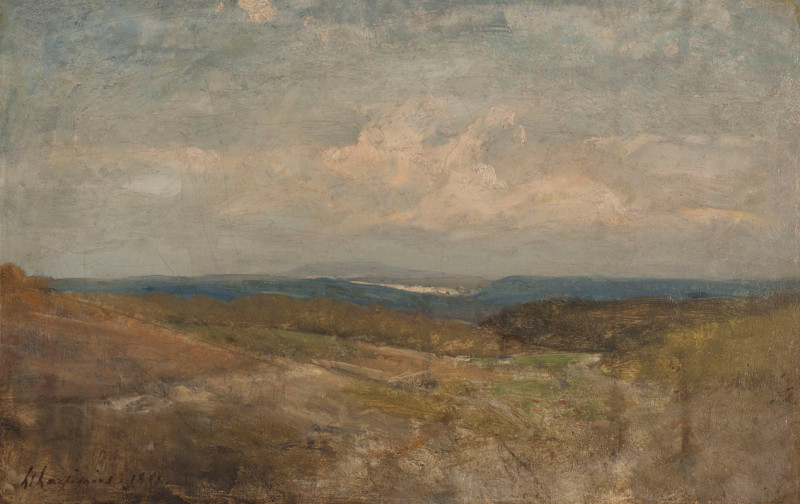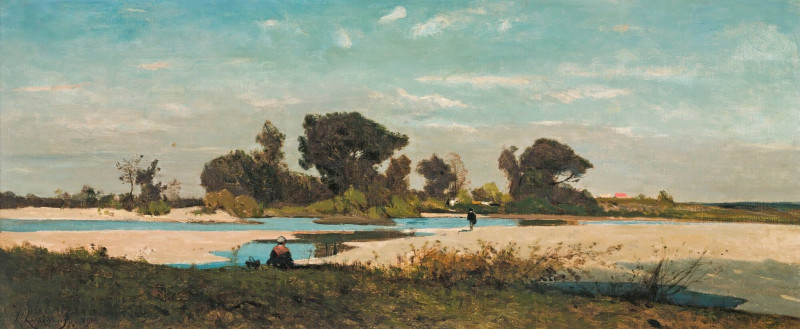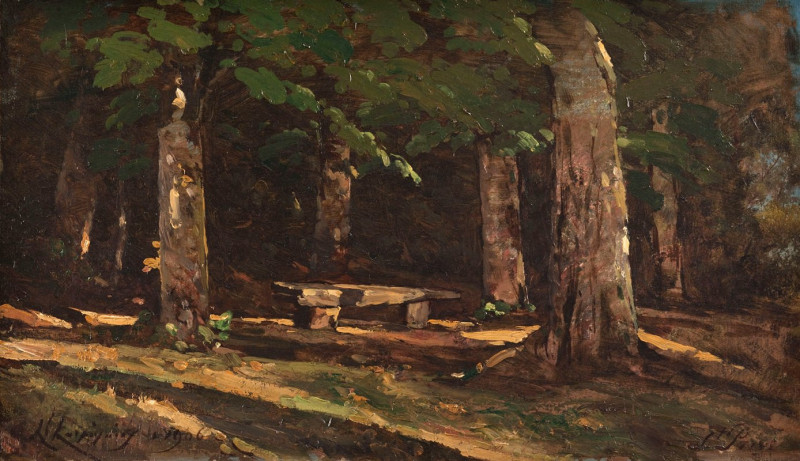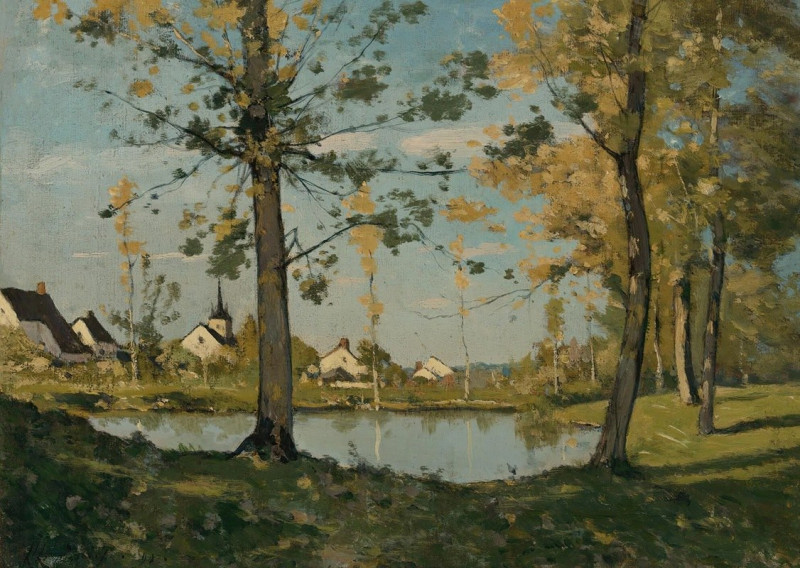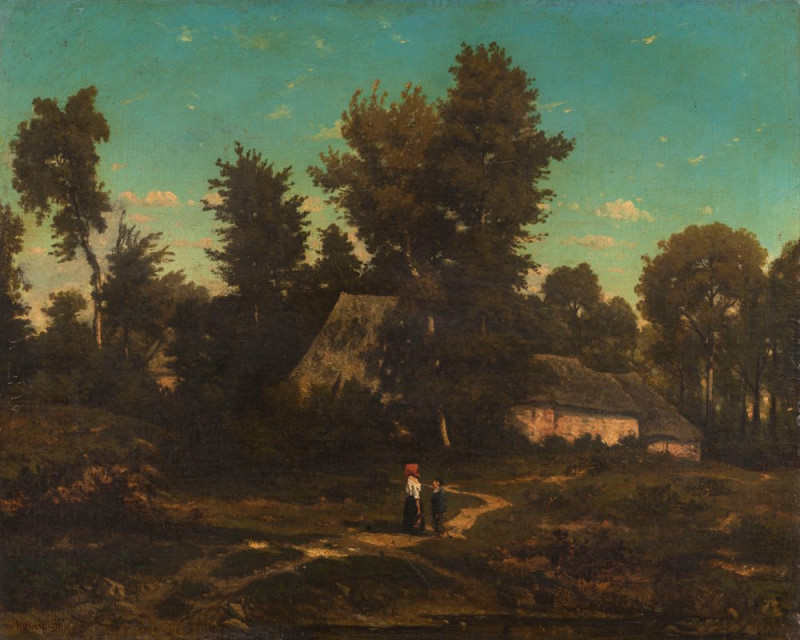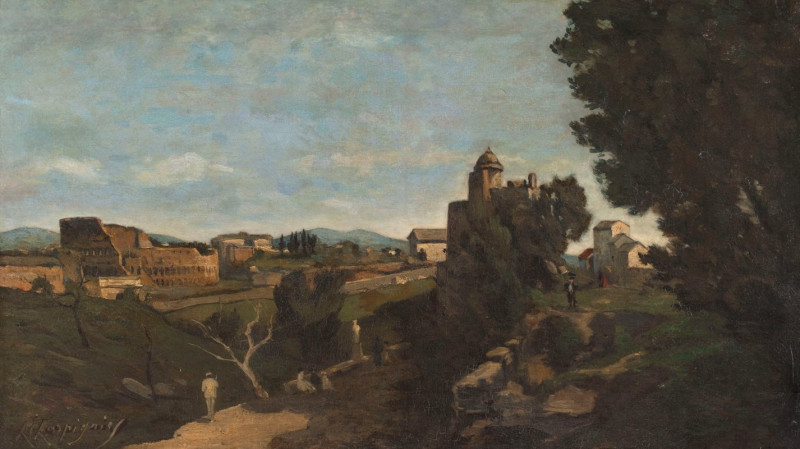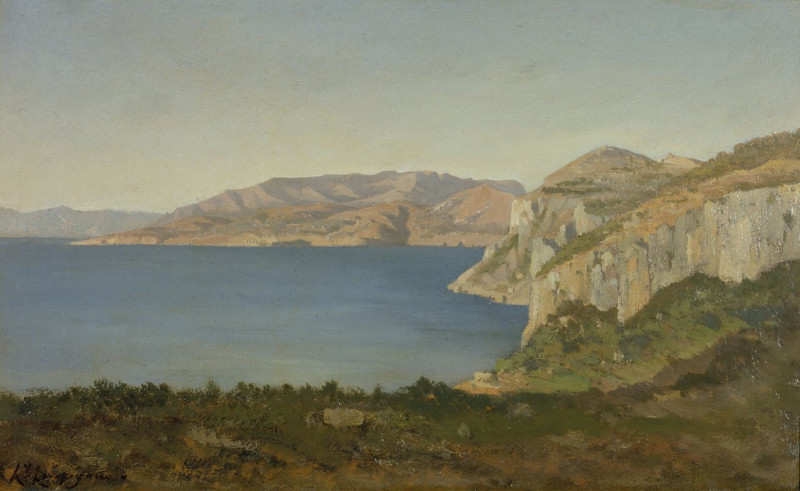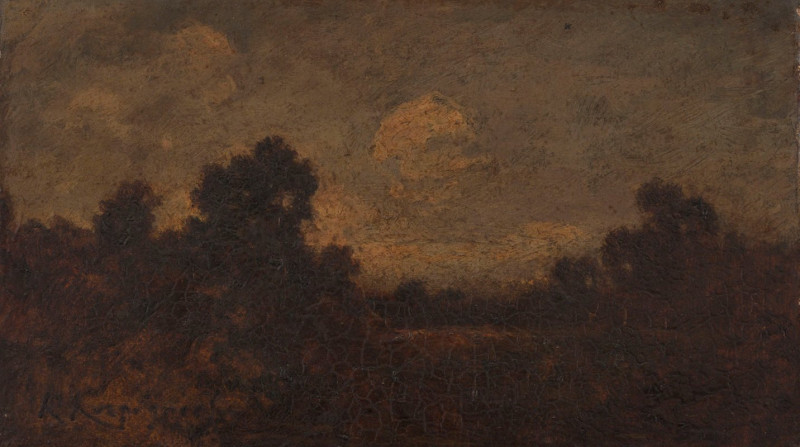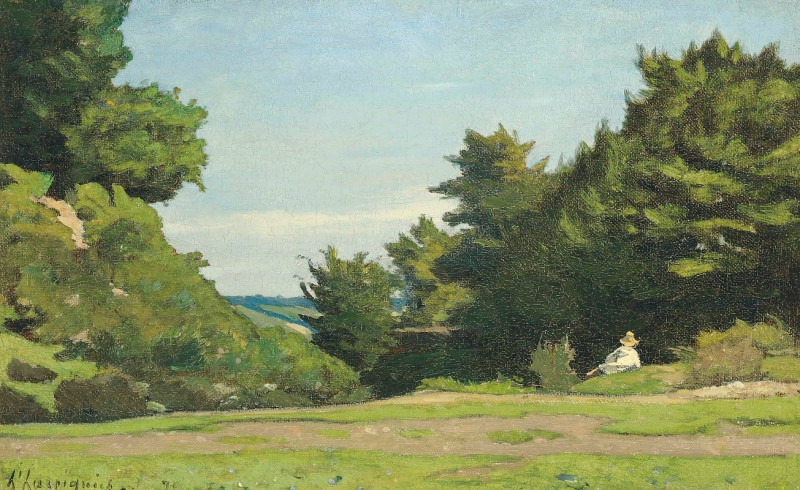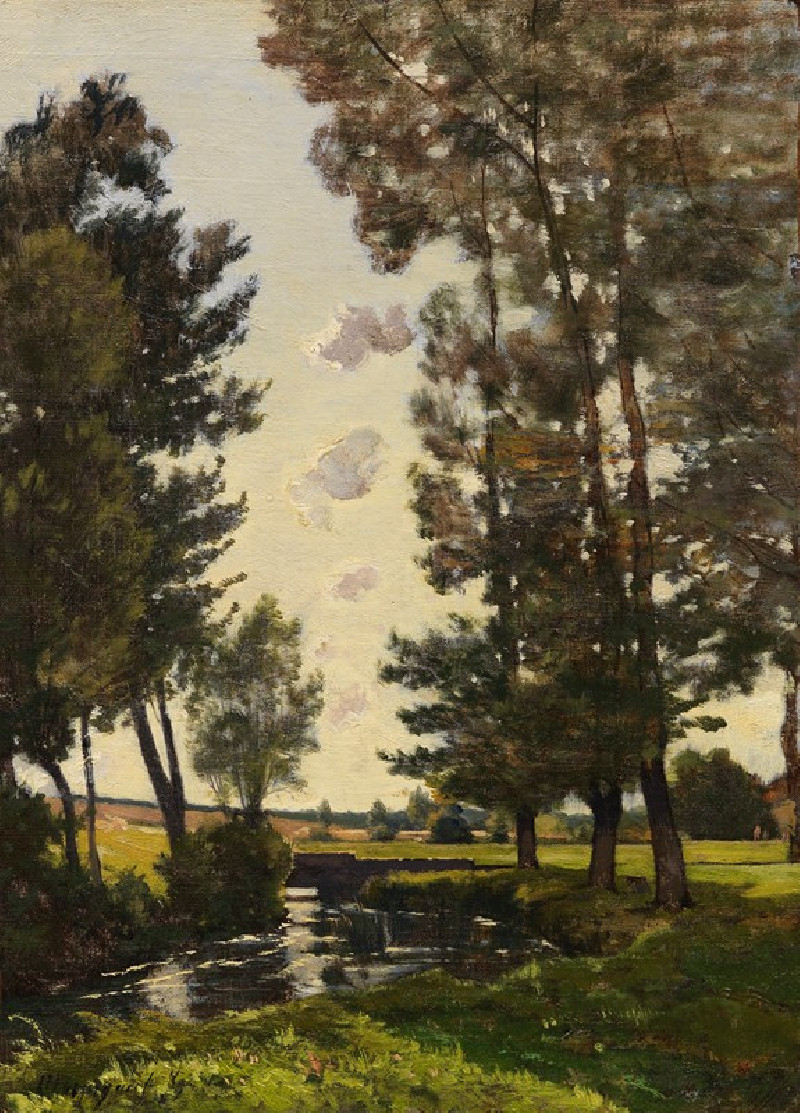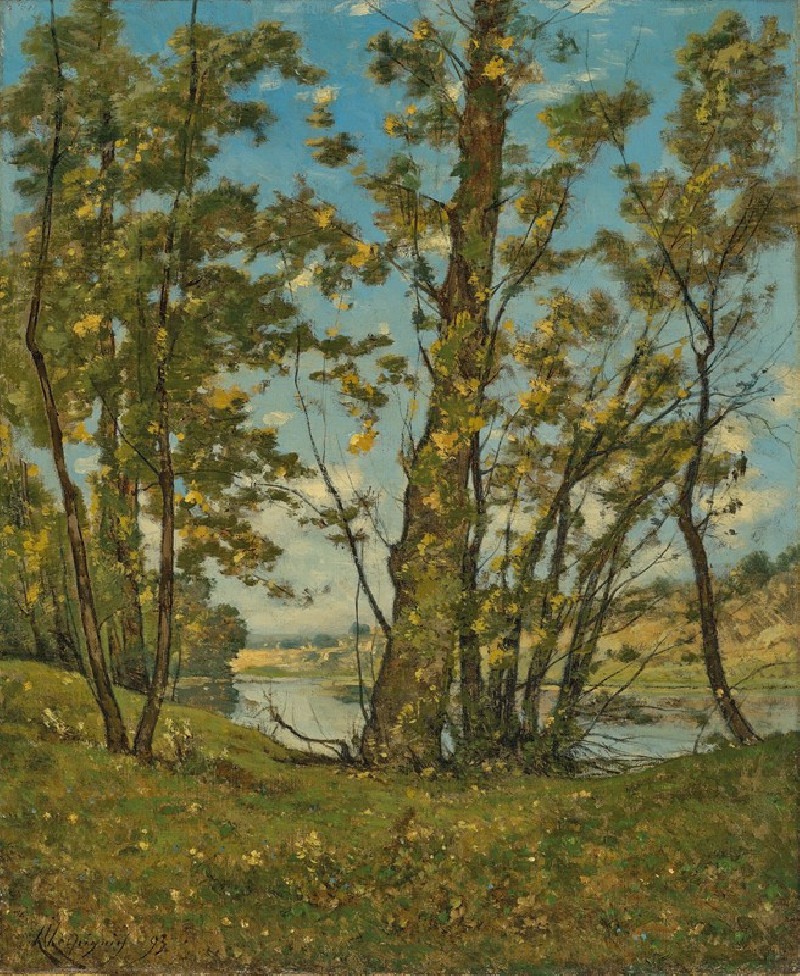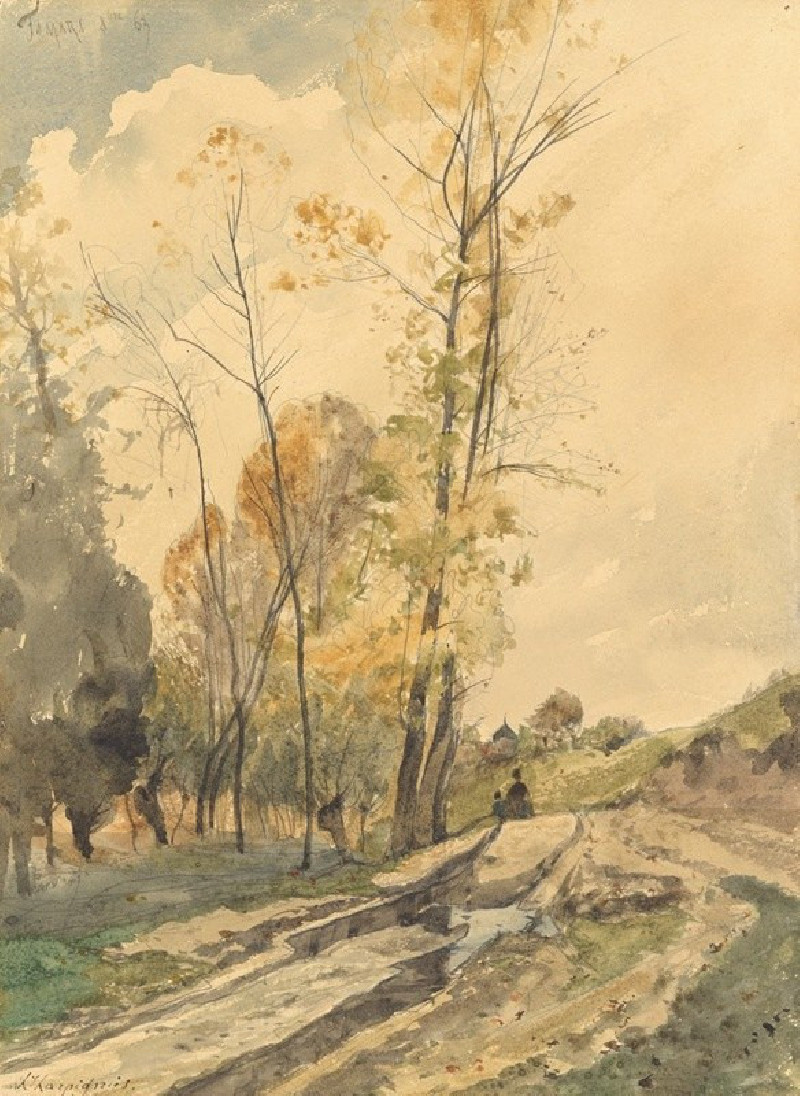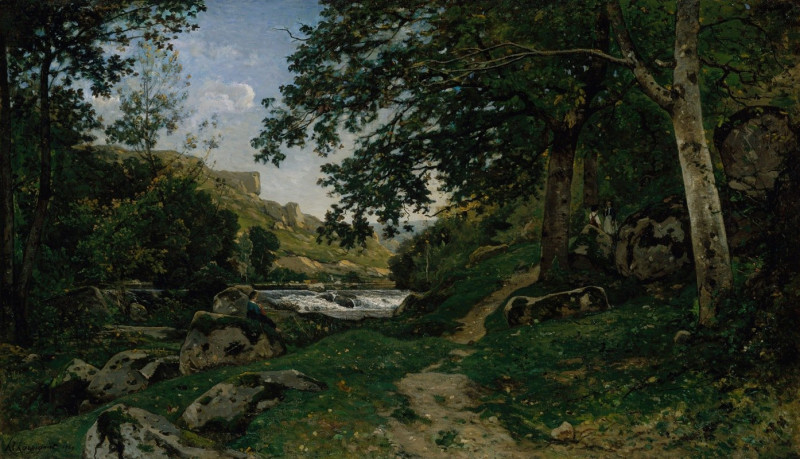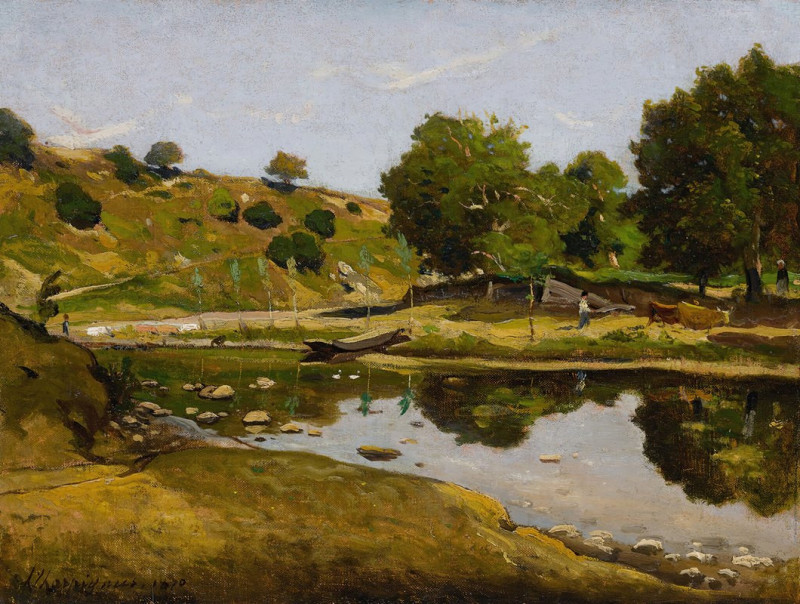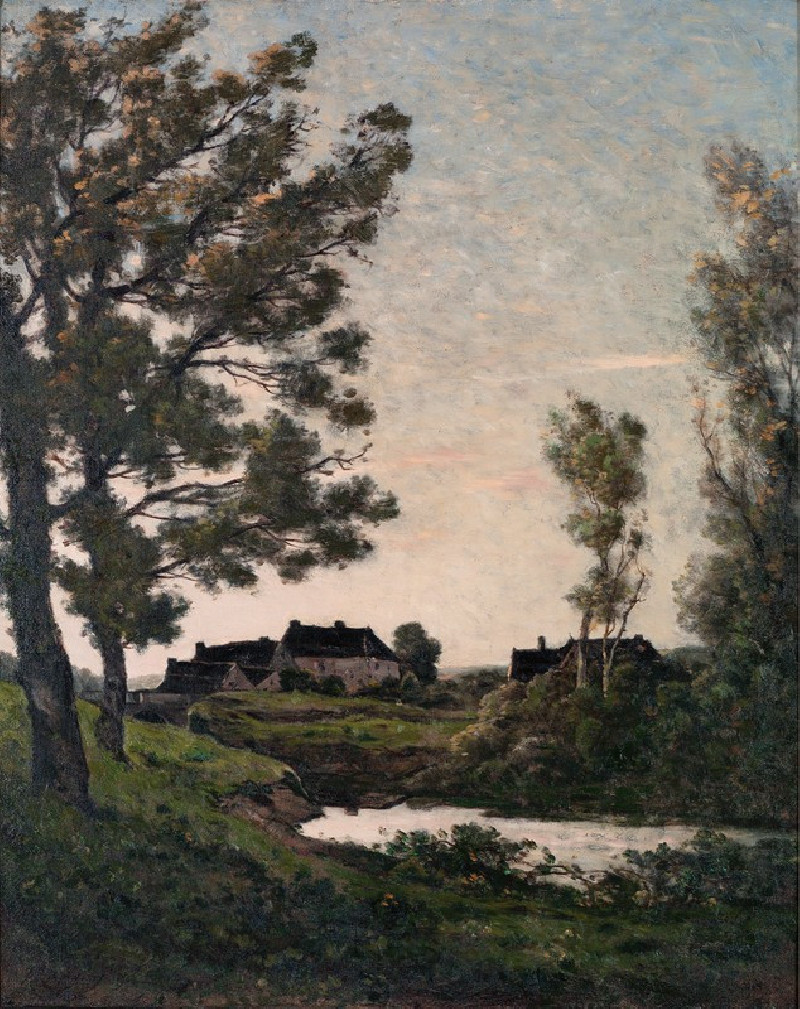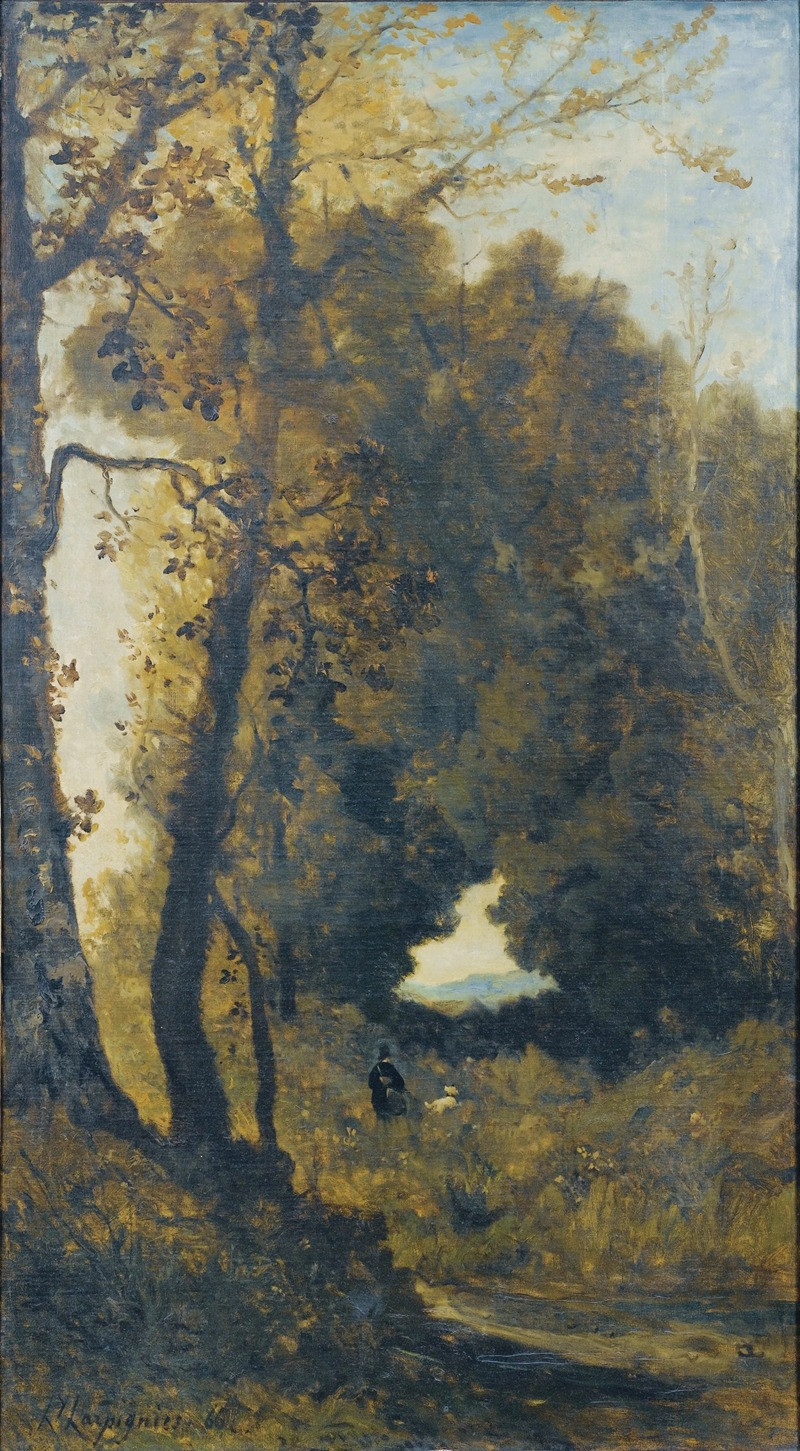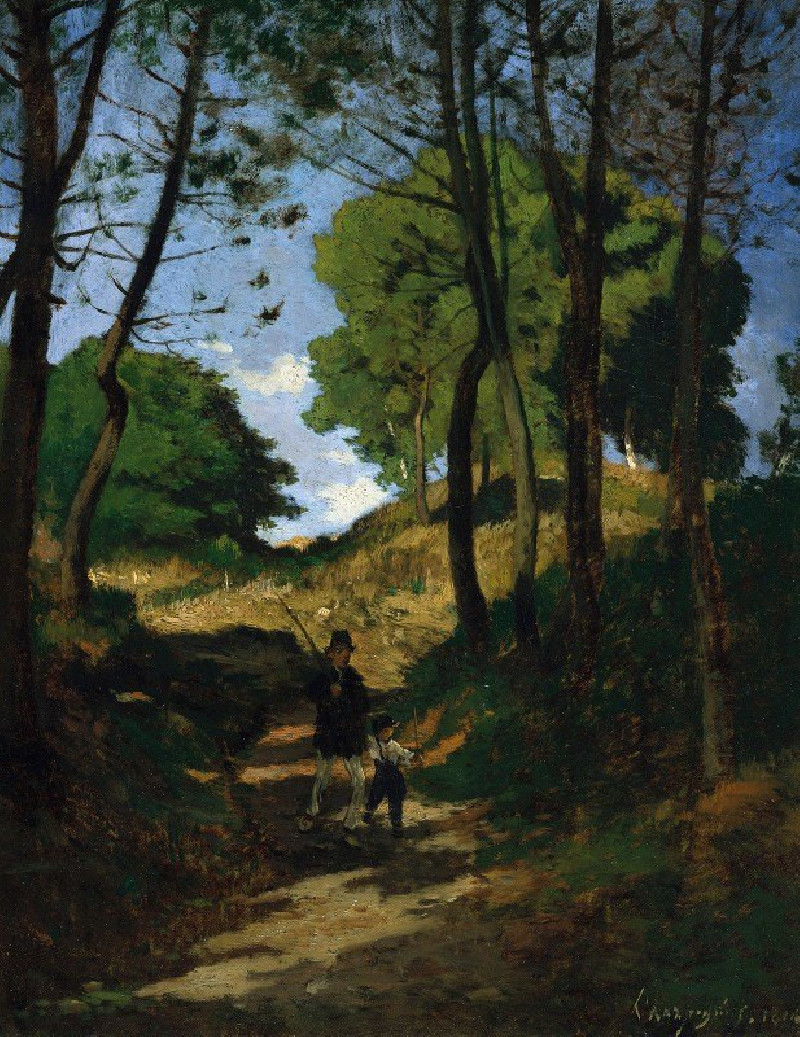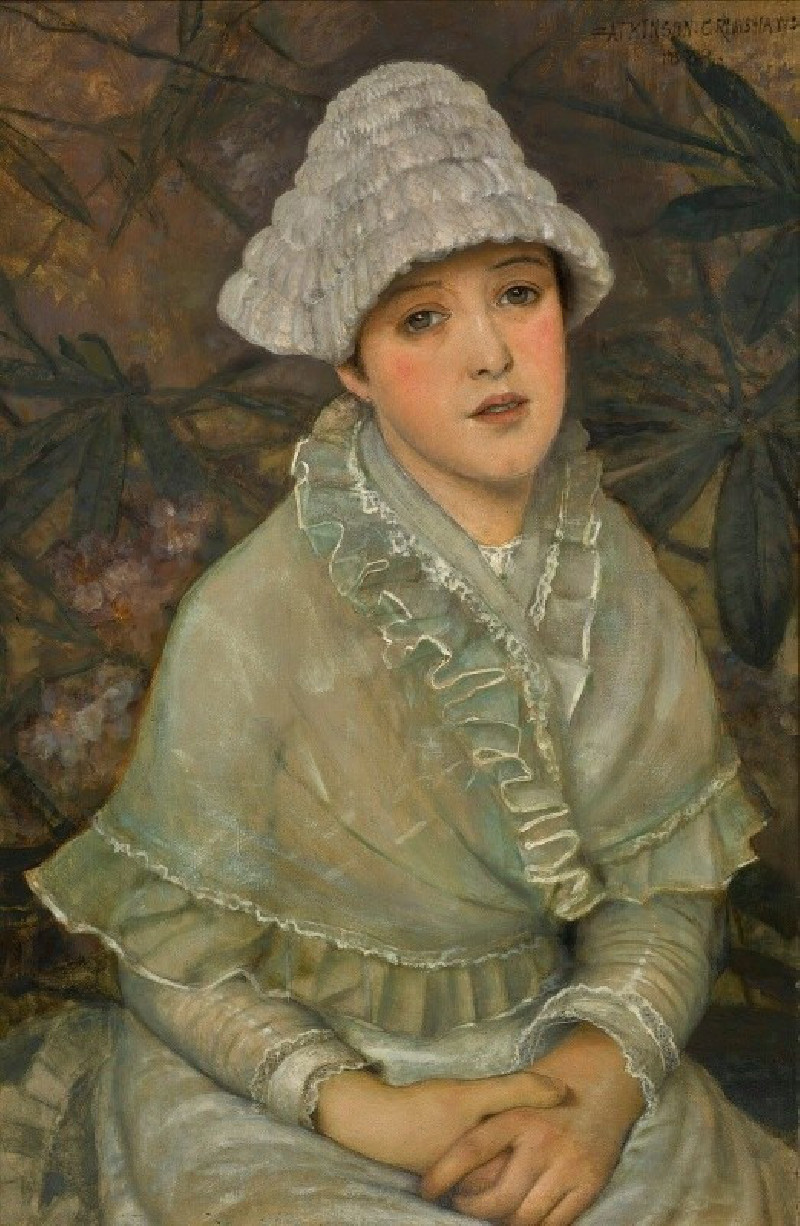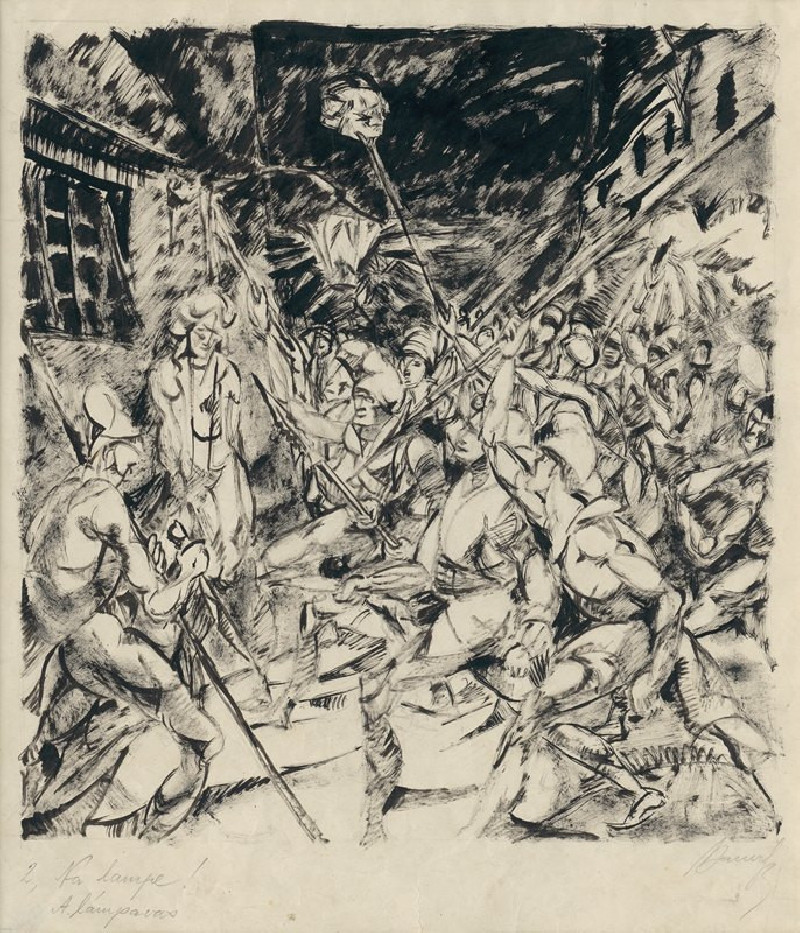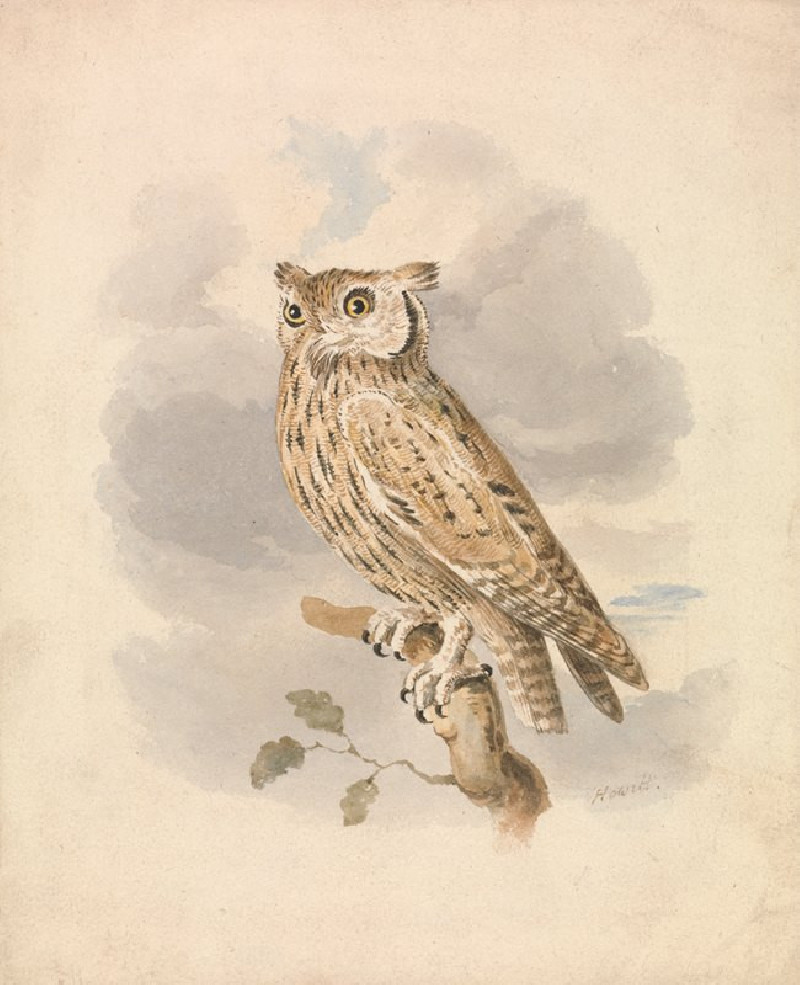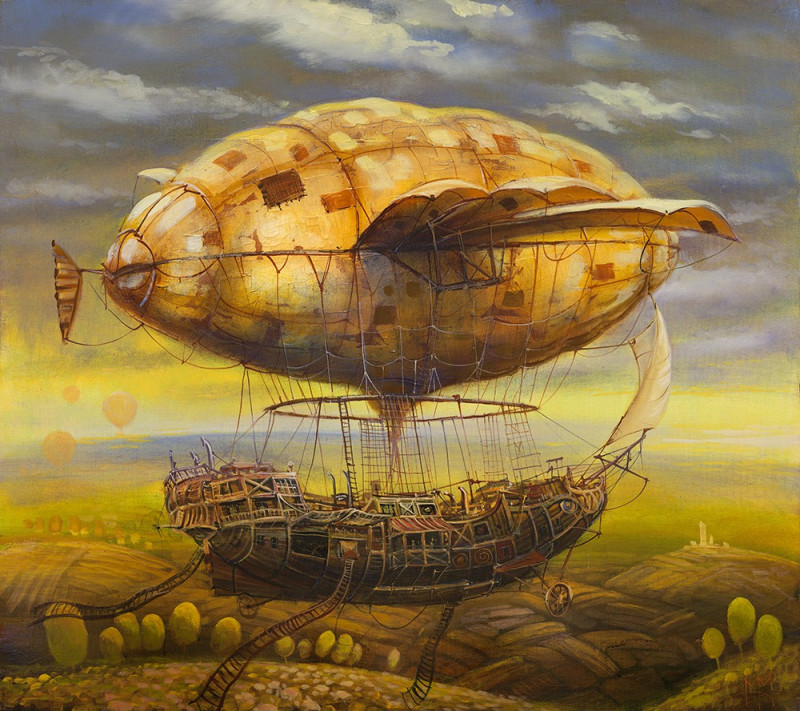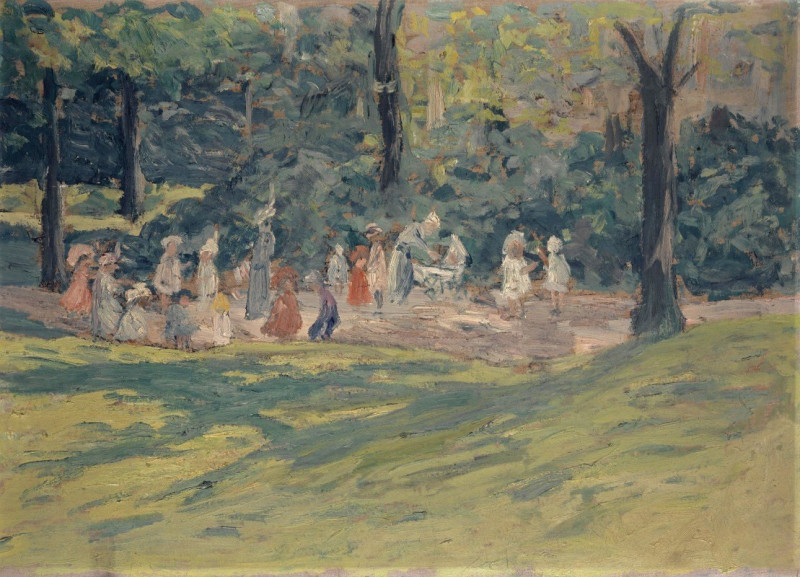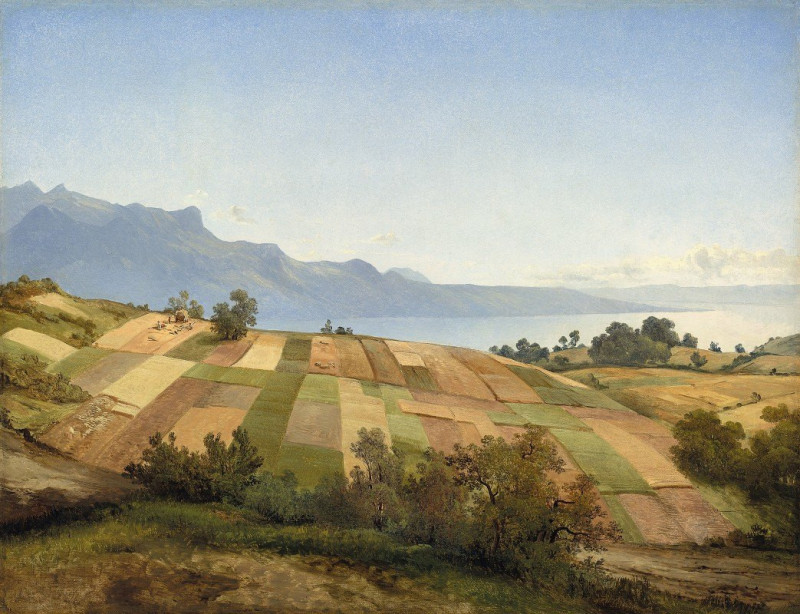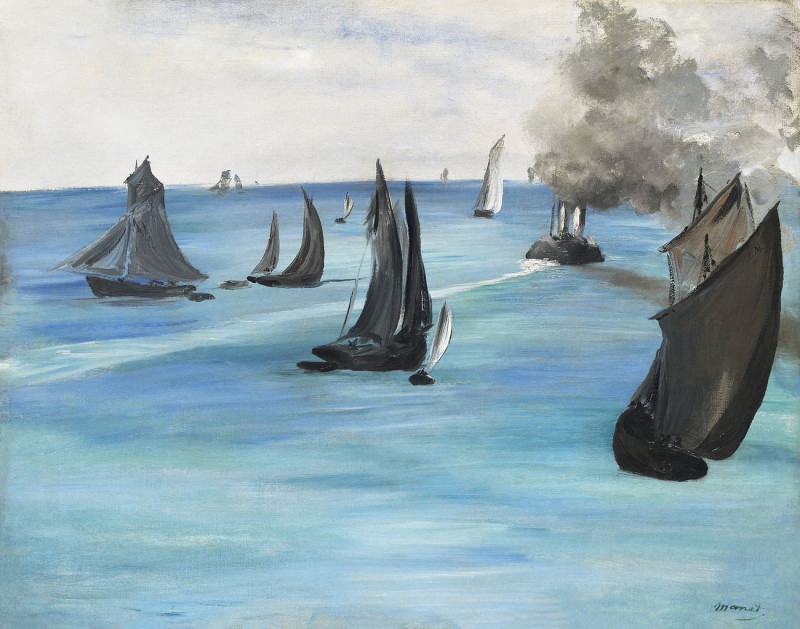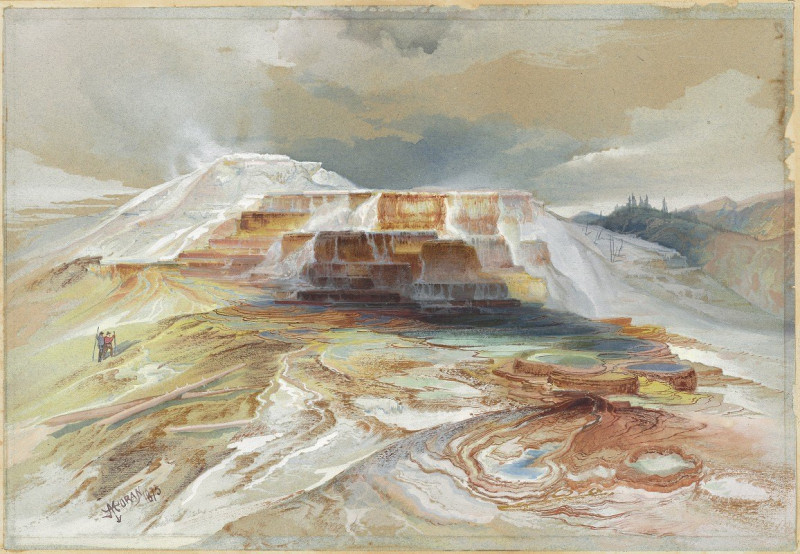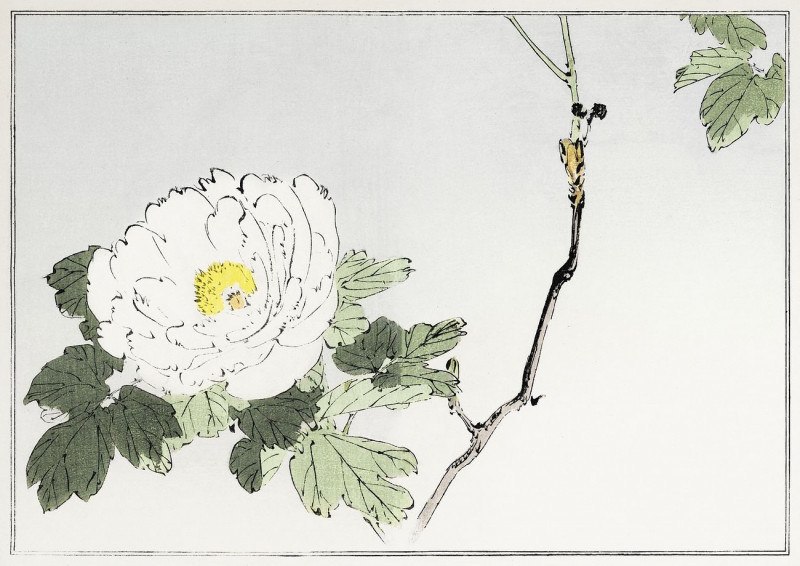Moonlit Landscape (1900–1910)
Technique: Giclée quality print
Recommended by our customers
More about this artwork
Dive into the soft, mysterious embrace of the night depicted in Henri-Joseph Harpignies' exquisite artwork, "Moonlit Landscape," painted in the early 1900s. This evocative piece is a study in the mastery and mood that can be wielded with monochrome textures.The painting captures a serene nocturnal scene where the light of the moon bathes the landscape in a gentle glow. Dominating the composition is a gnarled, solitary tree, its branches reaching out into the night like twisted tendrils. This tree, characterized by its dramatic and expressive silhouette, stands as a silent sentinel over the land, underscoring the quiet solitude of the nighttime realm.Beneath the sprawling branches, the landscape unfolds in softly blended strokes, a hill descends into what might be a distant river or valley—details that are rendered subtle under moonlight. A person appears almost as a shadow, small and transient in the vastness of nature, representing perhaps the fleeting presence of humanity in the face of the eternal elements.The sky, vast and overarching, is a canvas within the canvas, where the clouds are sketched in such a way that they seem to be in motion, swirling slowly in the lunar light. At the heart of this celestial expanse is the moon itself, glowing dimly but with enough power to illuminate the entire scene, reflecting on water or wetlands, adding depth and dimension to the composition."Moonlit Landscape" is not just a visual experience; it’s a quiet invitation to reflect on the tranquility and mysteries of the natural world, as seen through Harpignies' sensitive and poetic use of light and shadow.
Delivery
Returns
Henri-Joseph Harpignies (June 28, 1819 – August 28, 1916) was a French landscape painter of the Barbizon school.

